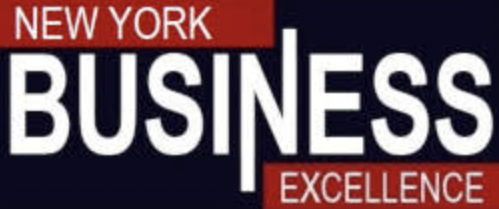47% of American workers feel financially well, up from 42% at this time last year. This is according to Bank of America’s 14th annual Workplace Benefits Report, “The Resurging Workforce.” Conducted in partnership with Bank of America Institute, the report also found that 53% of employees are concerned that economic uncertainty will affect their long-term retirement savings, down from 63% in 2023.
Meanwhile, the gap in financial wellness between men and women continues to grow, with 53% of men reporting good financial wellness compared to 36% of women. In addition, employees expressed concern about inflation, with 76% of workers saying that the cost of living is outpacing growth in their salary or wages, compared to 67% in June 2023.
“Despite concerns about the cost of living and plans to limit expenses, more employees are feeling confident about their financial well-being,” said Lorna Sabbia, Head of Workplace Benefits at Bank of America. “However, there is still work to be done to address gender equity, as women continue to report much lower financial wellness scores than men.”
Based on nationwide surveys of nearly 1,000 employees and more than 800 employers, the report analyzed employee financial well-being and retirement preparedness, the state of the workplace, benefits trends and more.

Key Insights:
- 6 in 10 workers are limiting current expenses. Many employees say they are taking proactive steps to improve their financial wellness, including limiting expenses (62%), paying down debt (43%) and adding to emergency funds (41%).
- Job loyalty remains high. 70% of employees plan to keep their jobs for the next year, with good work/life balance as the top reason employees want to stay (66%). Of those who plan to leave, compensation (52%) was the top reason for the switch, followed by career growth (45%).
- Pay equity is becoming a powerful recruitment tool. Only 44% of employers currently address pay equity. However, those with pay equity initiatives in place notice an impact, with 78% reporting an improvement in attracting top talent vs. 50% without such initiatives.
- There’s a potential disconnect in retirement health care expenses. Most Americans drastically underestimate the cost of health care in retirement. Current research [1] shows that a retired 65-year-old couple could need more than $350,000 in savings to cover their retirement health care expenses. However, according to this new Bank of America report, only 7% of employees think their yearly health expenses in retirement could total even $10,000.

Additional Findings:
- There’s a divide between working caregivers and employers. While most employers (81%) say they offer support to caregivers, 61% of caregivers are not aware of available support. This is significant, considering a little more than half of the employees (52%) we surveyed identify as caregivers, and 49% of caregivers are not comfortable self-identifying to their employers.
- American workers are beginning to re-prioritize retirement savings. The number of employees prioritizing long-term retirement savings is slowly trending upwards (33% today, up from 31% in 2023). This has become their top financial goal, overtaking those focused on short-term financial needs last year.
- Debt assistance is emerging as an attractive benefit. Employers are starting to explore ways they can support employees with debt, with 37% now offering student loan repayment assistance.
- Wellness reimbursements are becoming a new benefit trend. According to the data, 48% of employees want their company to offer a Lifestyle Spending Account (LSA), which can help employees pay for a range of wellness expenses and encourage healthy behaviors. Examples of qualified expenses may include gym memberships, mediation classes and camping supplies. However, only 29% of employers currently offer an LSA.
More findings, including actionable steps for employers, are available in the Bank of America 2024 Workplace Benefits Report.
Workplace Benefits Report Methodology
Escalent surveyed a national sample of 955 employees who are working full-time and participate in 401(k) plans, and 804 employers who offer both a 401(k) plan and have sole or shared responsibility for decisions made in the plan. The survey was conducted between November 22, 2023, and January 4, 2024. To qualify for the survey, employees had to be current participants of a 401(k) plan and employers had to offer a 401(k) plan option. Neither was required to work with Bank of America. Bank of America was not identified as the sponsor of the study.
About Bank of America Institute
Bank of America Institute is dedicated to uncovering powerful insights that move business and society forward. Established in 2022, the Institute is a think tank that draws on data and analyses from across the bank and the world to provide timely and original perspectives on the economy, sustainability, and global transformation. The Institute leverages the depth and breadth of the bank’s proprietary data, from approximately 68 million consumer and small business clients, 56 million verified digital users, $4.2 trillion in total payments in 2022 and $1.4 trillion in consumer and wealth management deposits. From this robust data set, the Institute provides a unique perspective on the health of the economy. It also elevates thought leadership from throughout the bank that addresses long-term trends and shares these findings with the general public.
Bank of America
Bank of America is one of the world’s leading financial institutions, serving individual consumers, small and middle-market businesses and large corporations with a full range of banking, investing, asset management and other financial and risk management products and services. The company provides unmatched convenience in the United States, serving approximately 69 million consumer and small business clients with approximately 3,800 retail financial centers, approximately 15,000 ATMs (automated teller machines) and award-winning digital banking with approximately 57 million verified digital users. Bank of America is a global leader in wealth management, corporate and investment banking and trading across a broad range of asset classes, serving corporations, governments, institutions and individuals around the world. Bank of America offers industry-leading support to approximately 4 million small business households through a suite of innovative, easy-to-use online products and services. The company serves clients through operations across the United States, its territories and more than 35 countries. Bank of America Corporation stock is listed on the New York Stock Exchange (NYSE: BAC).
Bank of America is a marketing name for the Retirement Services business of Bank of America Corporation (“BofA Corp.”). Banking activities may be performed by wholly owned banking affiliates of BofA Corp., including Bank of America, N.A., Member FDIC. Brokerage and Investment advisory services are provided by wholly owned non-bank affiliates of BofA Corp., including MLPF&S, a dually registered broker-dealer and investment adviser and Member SIPC.
Source – Bank of America


